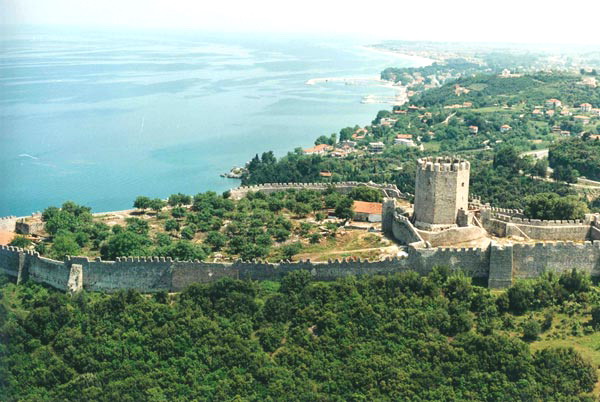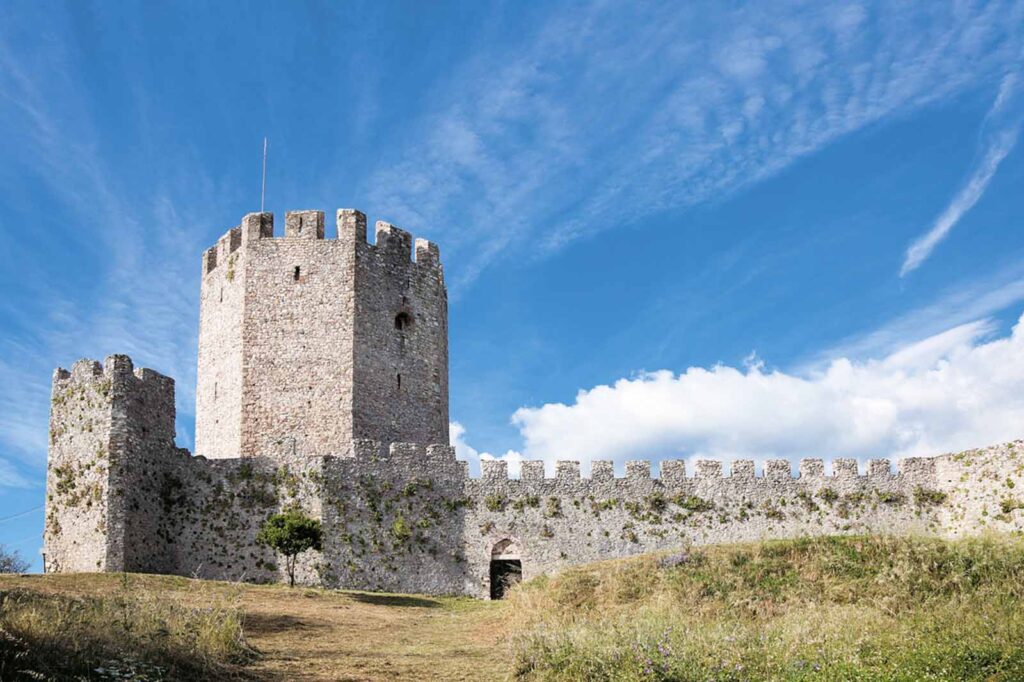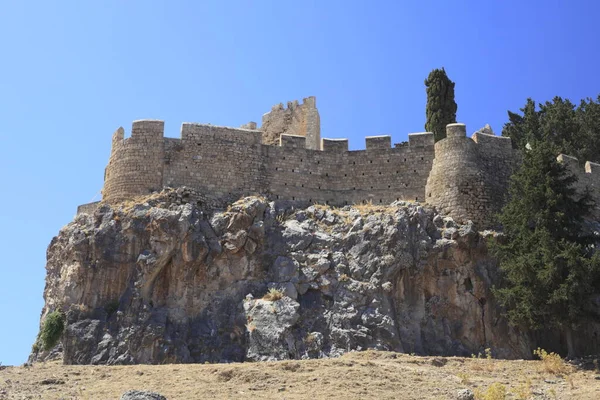A fortress built in the 11th century by the Crusaders, later conquered in 1470 by the Venetians,
and then in 1556 by the Turks.
The ruins of the castle are currently the site of cultural events, including: August Olympus Festival.

The castle sits atop a hill rising from the sea. This is a medieval work of the crusaders from 1204 (the fourth crusader expedition, instead of to Palestine, headed to Byzantium). Construction took over 20 years. Then its ruler was a French nobleman and feudal king of Thessaloniki? Boniface Montserrat. He was quite a famous figure in Greece at that time. He surrounded the hill with solid walls and built a huge, octagonal tower in the northern part of the castle. The fortress was intended to guard the passage between the mountains and the sea to the south. Together with the strongholds of the Kassandra and Chalkidiki peninsulas, it could have controlled the entire Thermaic Gulf. It also controlled the sea route from Euboea to Thessaloniki.
Outline of history

The castle and its surroundings came under various governments over the centuries. In 1470 it was captured by the Venetians, and in 1556 by the Turks. It was also rebuilt several times. Features of Byzantine and Franconian styles were found here. It was finally abandoned at the beginning of the 20th century and quickly fell into ruin. The defensive walls have been preserved in good condition to this day.

How to get there?
Access to the castle from all sides is quite difficult, because it is on an asphalt road and uphill all the time. You can use the tourist train from Pantelejmonas. You can walk around the ruins along the outer walls. You enter through a large gate. Inside, apart from the tower, there is not much to explore. The small church of St. Paraksewy and several archaeological sites where work is still ongoing.
Sprawdź również wersję polska artykułu–>